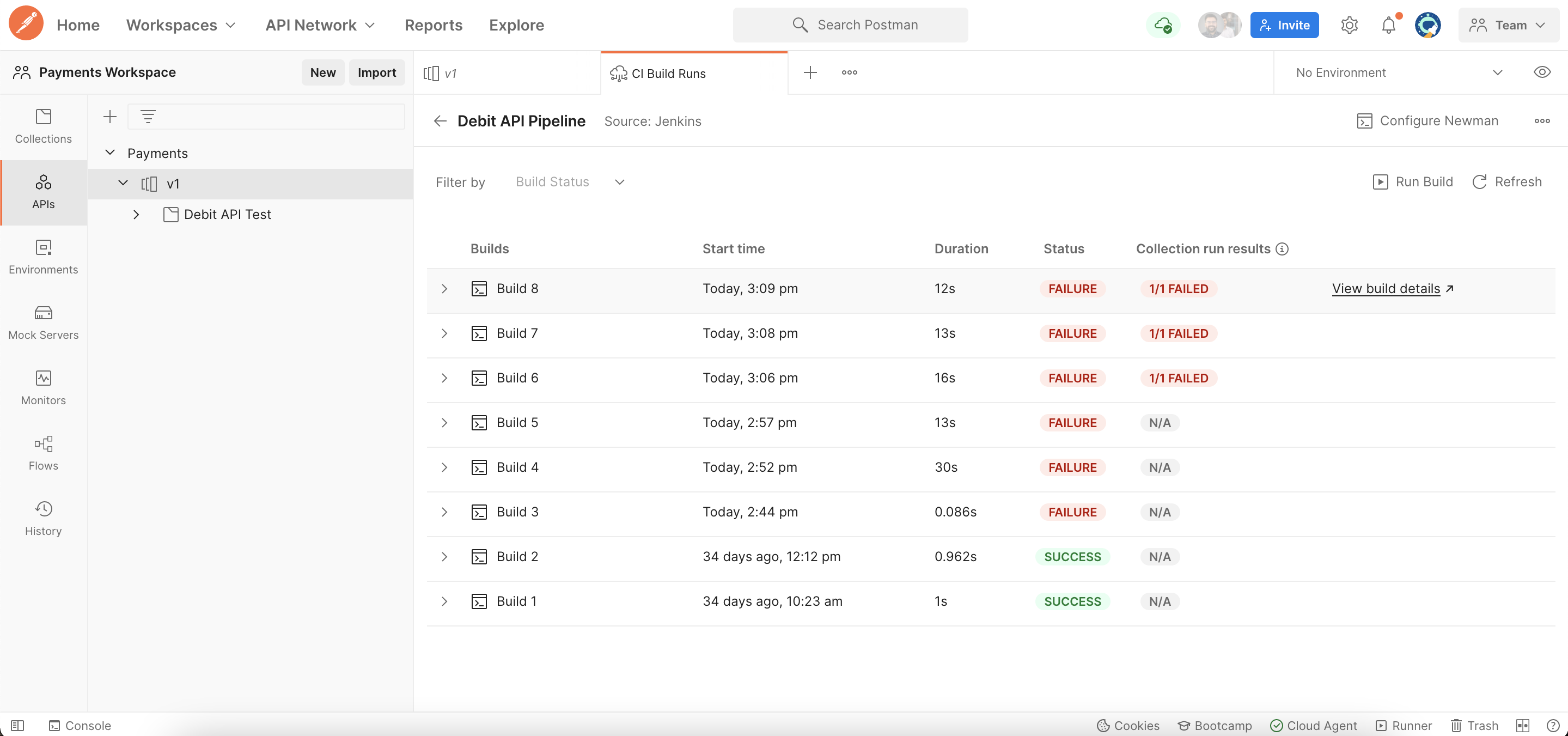Stay on Top of Your API Builds with Postman’s Jenkins Integration
The Postman API Platform allows you to build and manage your API across different stages of the API lifecycle. Continuously building upon the APIs is an important aspect of API management, with teams usually using CI/CD software to manage these builds. With Postman’s latest release, we bring the API build closer to your API within the platform by integrating with Jenkins, the open source automation server providing hundreds of plugins to support building, deploying, and automating any project.
Observe your Jenkins builds
While you iterate over your APIs, the Jenkins builds are triggered multiple times. While some of you may be looking at builds closely in Jenkins, not everyone in your team has access to the Jenkins instance. In such scenarios, your team members often depend upon other means, such as emails and Slack messages, to get informed of the recent builds and their status. With the new Jenkins integration, the build information can now be seen within Postman under the Test tab of the API.
This allows you to actively monitor your API builds along with the other components of the API. You can also trigger a build from Postman itself, allowing you to quickly test any changes in the API.

Get automation tests reports from anywhere in Postman
Newman is a CLI tool that is used to run the collections outside Postman. Teams use it to run their tests in CI/ CD pipelines, test environments, and more. While you could pull tests from Postman using APIs to run via Newman, the test reports had to be consumed outside Postman. This creates multiple sources for you to refer to while checking the automation test status of your APIs.
With the latest release, you now get the reports of automation tests running anywhere in Postman. The Newman reporter posts the results as a collection run in the History. The results can also be seen combined with your build reports from the CI/CD, giving you a single place to analyze your builds and associated tests.


What do you think about this feature? Tell us in a comment below. You can also give product feedback through our Community forum and GitHub repository.